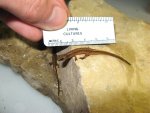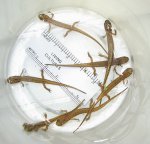KevinS - if you have anything interesting about Eurycea oviposition and breeding to discuss with Tim, please share it with the forum!!! What is your thesis on, exactly?
Sorry, didn't mean to sound like I don't want to share with the group, but I tend to ramble on when I'm on this subject and didn't want to monopolize the thread with lengthy messages that might distract from Tim's original post. My thesis work was on cave-associated populations of
Eurycea longicauda, though I took data on other species I encountered including
P. ruber and
E. lucifuga. I I put a link to it in the Conservation and Habitat Management forum on here. The thesis was rushed and didn't come out nearly as thorough as I would have liked, but I'm in the process of going back through the raw data to try and publish some of my findings so hopefully I'll have more to contribute from it in the future.
Anyway, a quick summary of my message to Tim would be:
1. I know of several references to
lucifuga eggs, but none with such a numerous count from a single female. If all of his eggs are from one female, I'm fairly surprised though it's certainly within the realm of possibility.
2. I've found larvae of
lucifuga and
longicauda in scenarios that suggest eggs were deposited in crevices and larvae were washed down into pools by infiltrating rain or snowmelt though I haven't personally found the eggs of either species.
3. I currently have some larvae of the aforementioned species that are taking a long time to metamorphose. I think at room temperature their metabolisms are so fast that my feeding frequency (about 2x per week) isn't generating growth as rapidly as I'd like.
That's the main jist of it without bogging you down with all the minor details.


